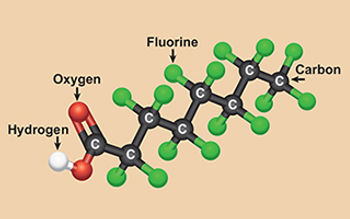What are PFAs/ PFOAs?
Per- and Polyfluorinated substances are a synthetic chemicals that have been long used in helping to make consumer products non-stick and water resistant, and in specialized applications such as firefighting foams.
The problems is that these compounds persist for a long time in the environment, and can accumulate in wildlife, and in humans. And eventually in NJ well water especially.
The long-term health risks of PFAs and PFOA haven’t been thoroughly studied, but human exposure has been linked to developmental defects in pregnancy and in breastfed infants, as well as effects on cancer, the liver, and the thyroid.

